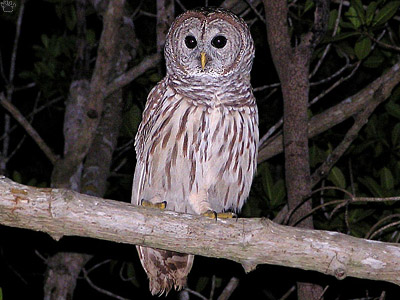
Barred owl (Strix varia), Everglades National Park. |
Florida, part 14: Owls and nightjars
Six species of owls occur in Florida, but in the southern part of the peninsula you mostly see barred owls. Birds of local population are very tame and easy to watch. Almost every time you visit local forests at night, you see or at least hear them.
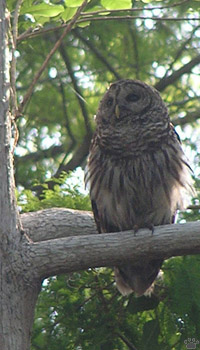
Barred owl, Highlands Hammock State Park. |
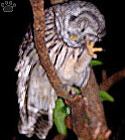 |
 |
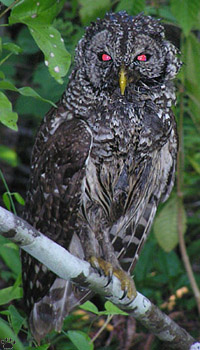
Barred owl, ENP. |
| Barred owls, ENP. |
They mostly feen on rodents and birds.
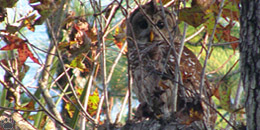
Barred owl, Highlands Hammock State Park. |
| They also fish in the shallows for fish, frogs, crayfish, and water snakes. |
 |
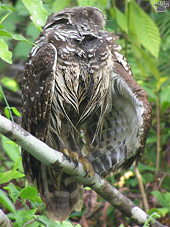 |
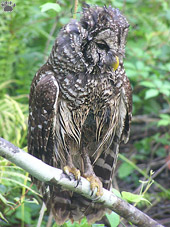 |
 |
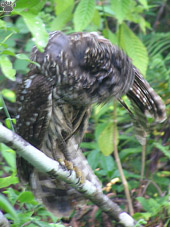 |
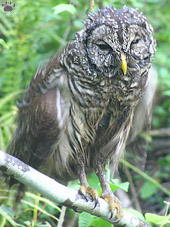 |
 |
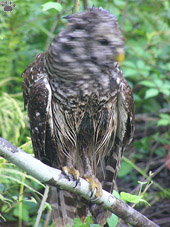 |
| Barred owl after bathing, ENP. |
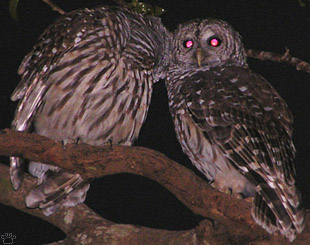
Barred owls during courtship, ENP. |
Barred owls have the most beautiful song of all North American owls. And they sing a lot from January to August. |
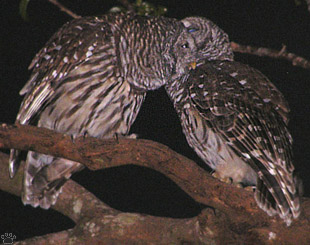
Barred owls during courtship, ENP. |
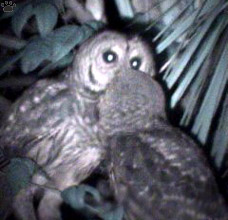 |
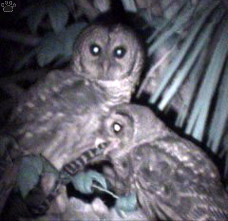 |
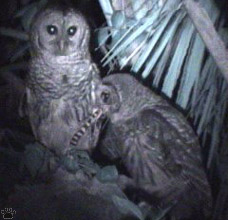 |
| Barred owl feeding a Florida water snake (Nerodia fasciata pisciventris) to a fledgling chick. ENP. |
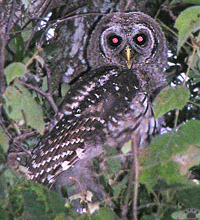
|
Fledgling chicks are also very noisy and easy to locate in the forest.
|
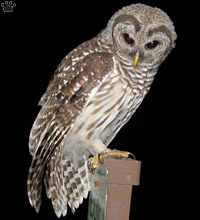
|
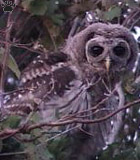 |
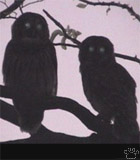 |
| Fledgling barred owls, ENP. |
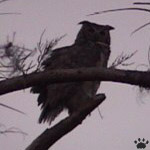
Great horned owl (Bubo virginianus), |

Lake Kissimmee. |
Great horned owl is also very common in Florida, although it is seldom seen in the Everglades. Both species occasionally nest in large city parks, campgrounds and gardens. |
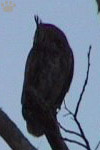
s. |
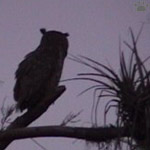
Great horned owl, Lake Kissimmee. |
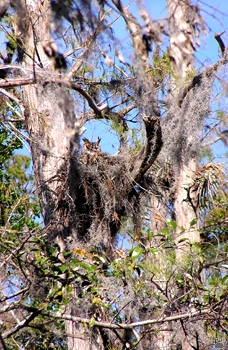 |
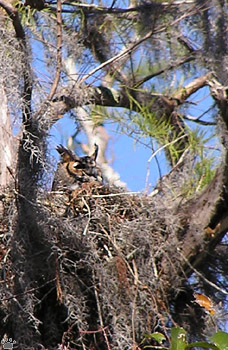 |
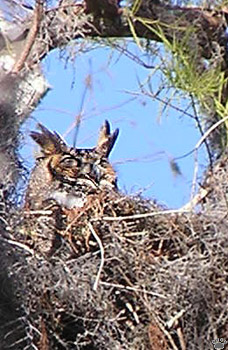 |
| Female great-horned owl on her nest, Arthur R. Marshall Loxahatchee National Wildlife Refuge. |
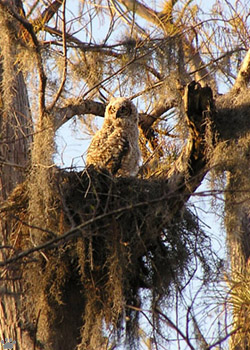
Half-grown chick at the nest, ARMLNWR. |
In February of 2007, I got a chance to observe a nest of great horned owl.
|
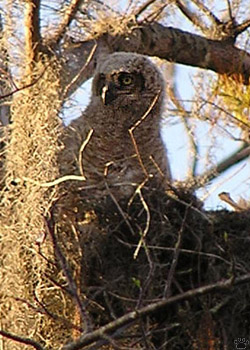
Half-grown chick at the nest, ARMLNWR. |
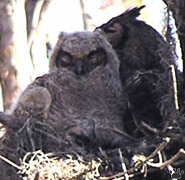
Female and her chick, ARMLNWR. |
It was built about 20 m/70' above ground in a patch of baldcypress forest. |
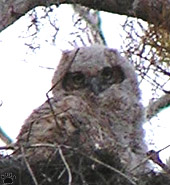 |
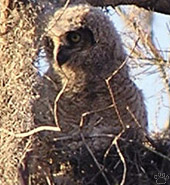 |
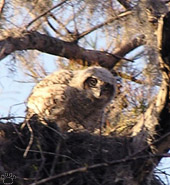 |
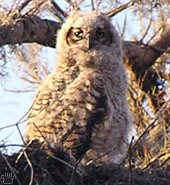 |
| Half-grown chick at the nest, ARMLNWR. |
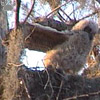 |
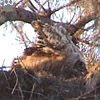 |
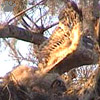 |
| Evening calisthenics. ARMLNWR. |
|
The chick was always fun to watch. |
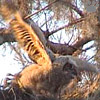 |
 |
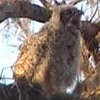 |
| Evening calisthenics. ARMLNWR. |
|
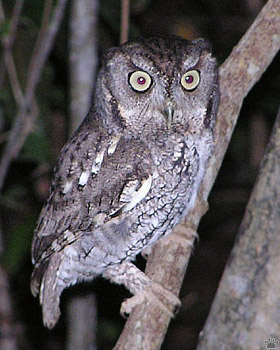
Eastern screech-owl (Otus asio), Key Largo Hammocks SBS. |
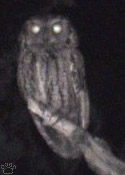
Eastern screech-owl, Miami. |
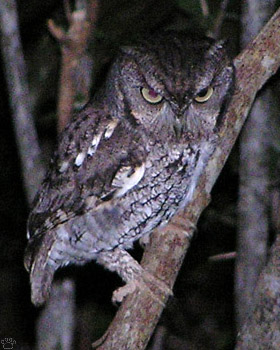
Eastern screech-owl, Key Largo Hammocks State Botanical Site. |
| Eastern screech-owl is the smallest in Florida, and the only one often nesting on city streets. It is also common in forests of all types. |
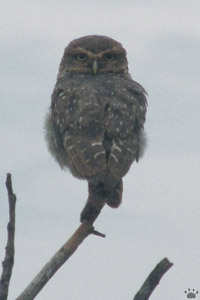
Burrowing owl (Athene cunicularia), Opa-Locka. |
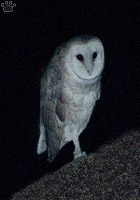
Barn owl (Tyto alba),
Everglades City. |
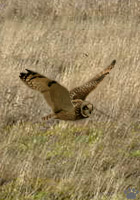
Short-eared owl (Asio
flammeus), Cedar Keys. |
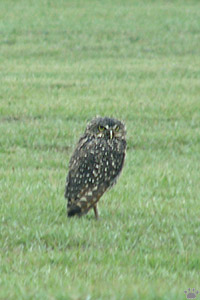
Burrowing owl, Opa-Locka Executive Airport. |
| Other owls are rare in the state, especially the burrowing owl: its small, isolated population nests in a few airports and dry prairie lots. |

Common nighthawk (Chordeiles minor), Big Cypress National Preserve. |
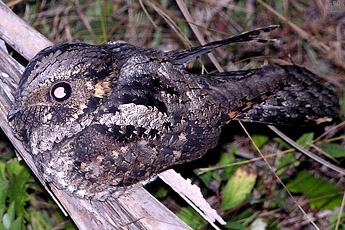
Whip-poor-will (Caprimulgus vociferus), Andrews Wildlife Management Area. |
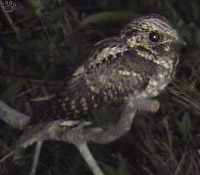
Whip-poor-will, BCNP. |
Chuck-will's-widow is the only species of nighthawk present in Florida year-round. In winter it is joined by whip-poor-wills from up north. They are easy to tell apart during night drives: the latter usually allows close approach, the former doesn't. Lesser nighthawk is common summer visitor; large flocks can sometimes be seen on migration. Very similar Antillean nighthawk (Ch. gundalchi) is mostly confined to the Keys. |
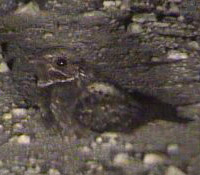
Chuck-will's-widow (C. carolinensis), BCNP. |
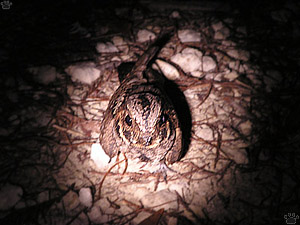
Whip-poor-will, ENP. |
Part 15. Other landbirds
Back to Part 13
Home
|






















































